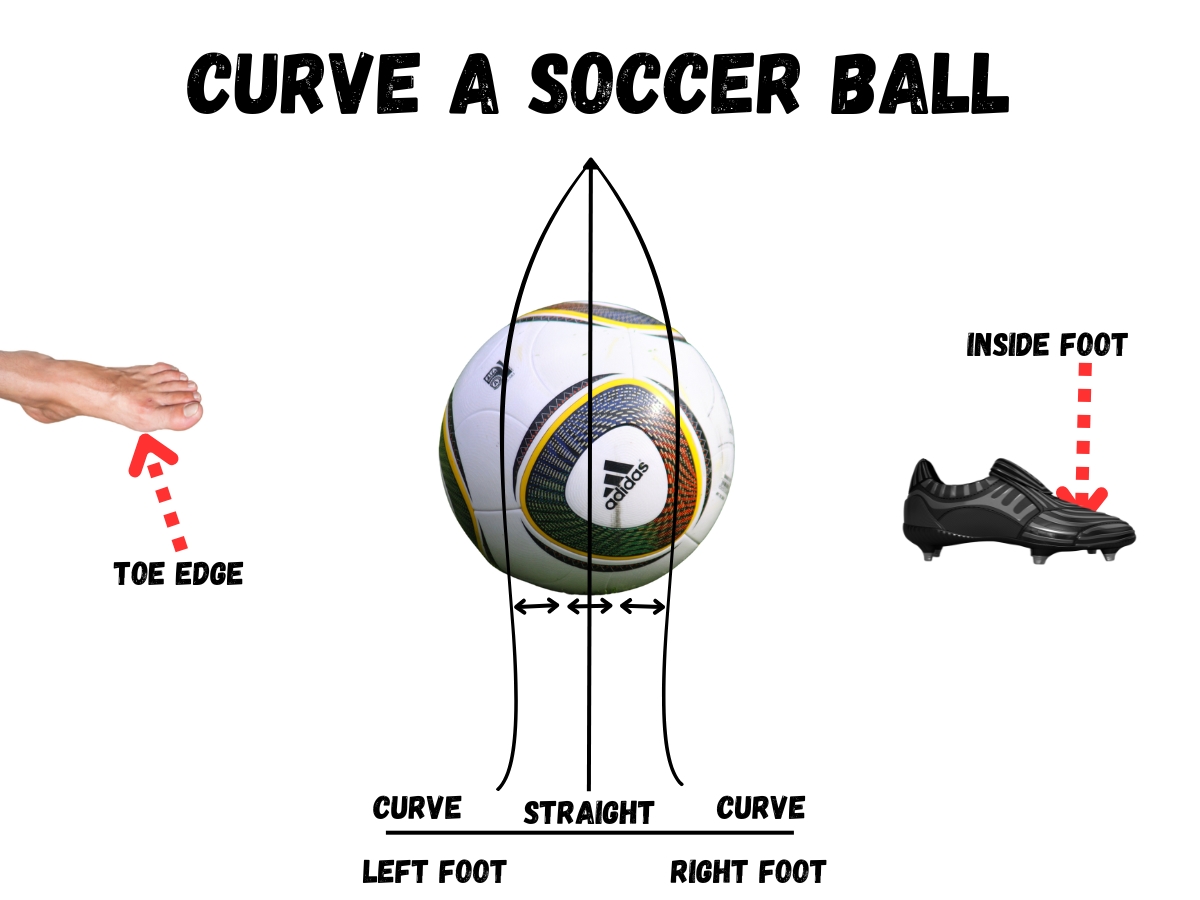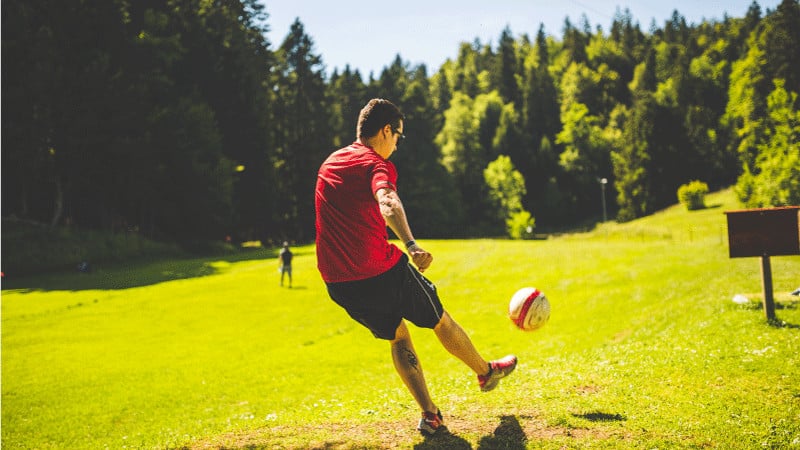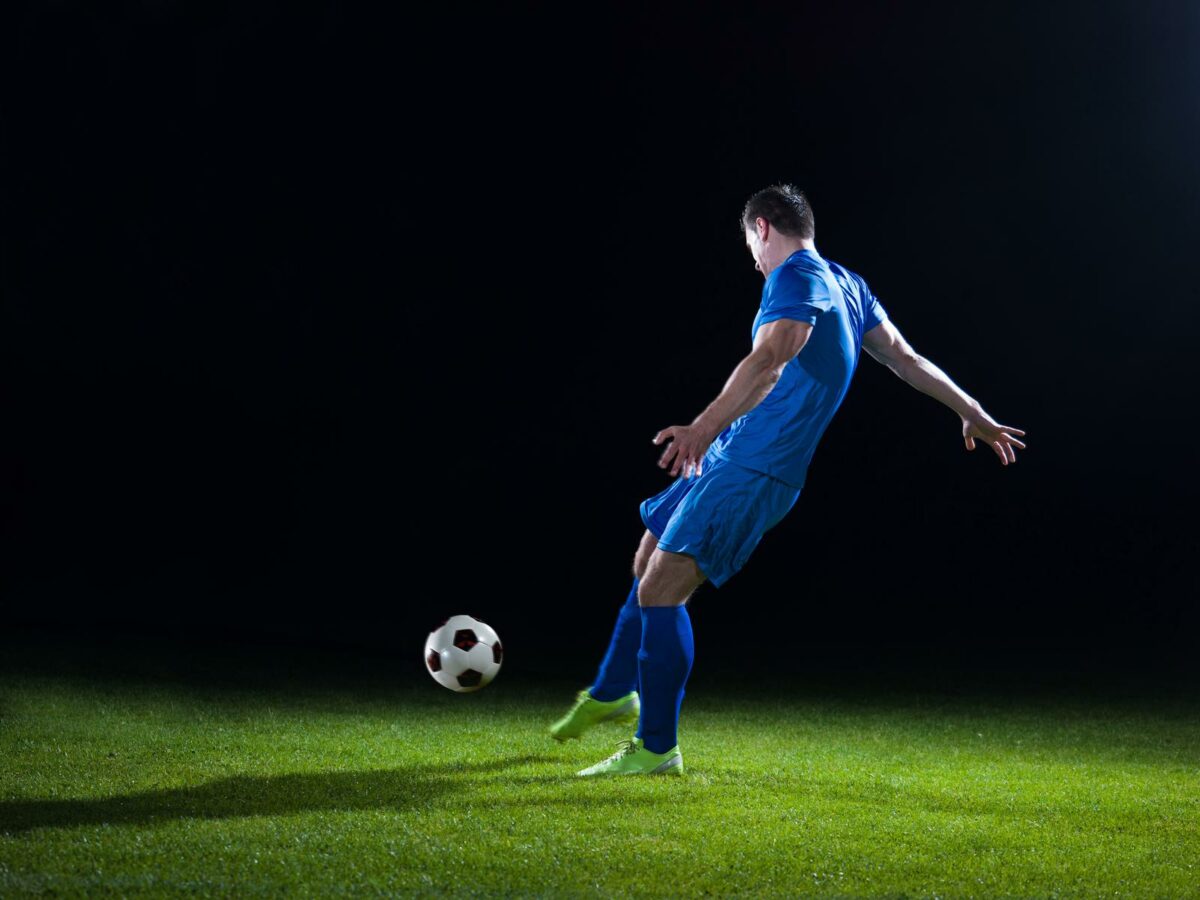Share the post "Why A Soccer Ball Curves (Physics & How To + Diagram)"
One of the most entertaining and awe-inspiring moments in soccer is when a player can make the ball curve. It’s definitely an impressive moment for an important reason: most people can’t achieve such a good curve unless with a strict training routine.
But have you ever wondered exactly why soccer balls curve? If the answer is yes, you’re about to find out why.
In this article, we’re going to explain the real physics behind a curving soccer ball, what causes it to curve and what doesn’t, as well as tips for beginners who want to master this fancy soccer trick. So, let’s get down to business!

Explained: Why Does a Soccer Ball Curve?
The angle and speed with which the soccer player’s boot strikes the ball determine how far the ball travels. The ball won’t curve or spin if the player hits it right in the middle with their foot following through in a completely straight line.
Theoretically, you can apply spin to a ball by kicking it off-center. The amount of spin the ball has is determined by the exact area where you hit it and the force you use. The ball’s spin causes it to curve as it flies through the air.
Because of the Magnus effect, a spinning soccer ball curves. Isaac Newton was the first to notice that a backspin causes a tennis ball to flatten out its trajectory, while topspin causes it to dip.
The Magnus effect is a theory that describes how spinning objects move through air or water. The airflow is changed by the movement of the spinning ball as it passes over it, causing the ball to shift its flight path.
Physics
Let’s talk physics… Friction between the soccer ball and the air makes the air react to the ball’s spin direction. The air velocity around the top half of the soccer ball becomes smaller than it is around the bottom half of the soccer ball when it top-spins.
This is because the top half of the ball’s tangential velocity acts in the opposite direction of the airflow, while the bottom half’s tangential velocity acts in the direction of the airflow.
The pressure on the top of the ball is greater because the airspeed around its top half is smaller than the airspeed around its bottom half.
The ball is subjected to a net downward force as a result of this. This is because of Bernoulli’s principle, which implies that as air velocity slows, air pressure rises.

The Spin
As a result, when a player kicks the ball to the right of the center, it causes it to spin counterclockwise and the Magnus force to act to the left, resulting in a ball that curves to the left.
On the other hand, when a player kicks the ball left of center, it causes it to spin clockwise and the Magnus force to act to the right, resulting in a ball that curves to the right.
By the time the soccer ball hits the net, it may have deviated as much as a few feet from its original trajectory. This is an excellent goal-scoring approach since it makes the course of the ball unpredictable for the goalkeeper as he gets ready to block the shot.
The Magnus Effect
Since this is a tried-and-true scientific method, anyone can use it. The Magnus effect commonly happens in soccer with corner kicks, free kicks, wing crosses, and other shots and passes.
Thus, the curved shots you watch players take are more than just luck; they are the result of them taking advantage of the Magnus effect.
The natural technique for a right-footed player is to brush toward the outside of the ball, making a pass or shot with a right-to-left hook, while the natural shot for a left-footed player will curl left-to-right.
What can we conclude? Curving a soccer ball is something that everyone can learn. You can learn to make a soccer ball curve like your favorite pro players do by following the instructions outlined below.

How to Curve a Soccer Ball
Before learning how to achieve a curved shot in soccer, you first need to know that it’s not easy to master this skill. Professional players spend years developing their talents to be able to pull off this shot. But that isn’t to say that you shouldn’t give it a ‘shot’ (pun intended).
This only shows that if you keep working on it, you can pull it off, too. No one is born a pro, and even the best players must acquire it and then practice it over and over. Follow the steps below to help you master this trick:
- From the side, run up to the ball. If you’re a right-footer, you want to approach from the left, but if you’re a left-footer, you should approach it from the right. A perfect angle is often described as one of 90°. This angle can differ, but at the end of the day, you want to have some form of angled approach.
- Strike the ball using the inside of your boot. You don’t want to hit it exactly in the middle, as this will simply send it in a straight line. To achieve the desired curved flight, you must make contact off-center.
- The amount of power you use has an impact on the quantity of spin you get. A larger curve and more spin are usually the result of a harder kick. This is something you’ll only have a sense of after trying it several times with various power levels.
- Practice makes perfect. Never stop practicing until you are sure of your ability to control the ball’s curve. Many players can curve the ball, but only a small percentage of them reach a high level of control over the ball.
Share the post "Why A Soccer Ball Curves (Physics & How To + Diagram)"
Joel is a seasoned soccer journalist and analyst with many years of experience in the field. Joel specializes in game analysis, player profiles, transfer news, and has a keen eye for the tactical nuances of the game. He played at various levels in the game and coached teams - he is happy to share his insight with you.



